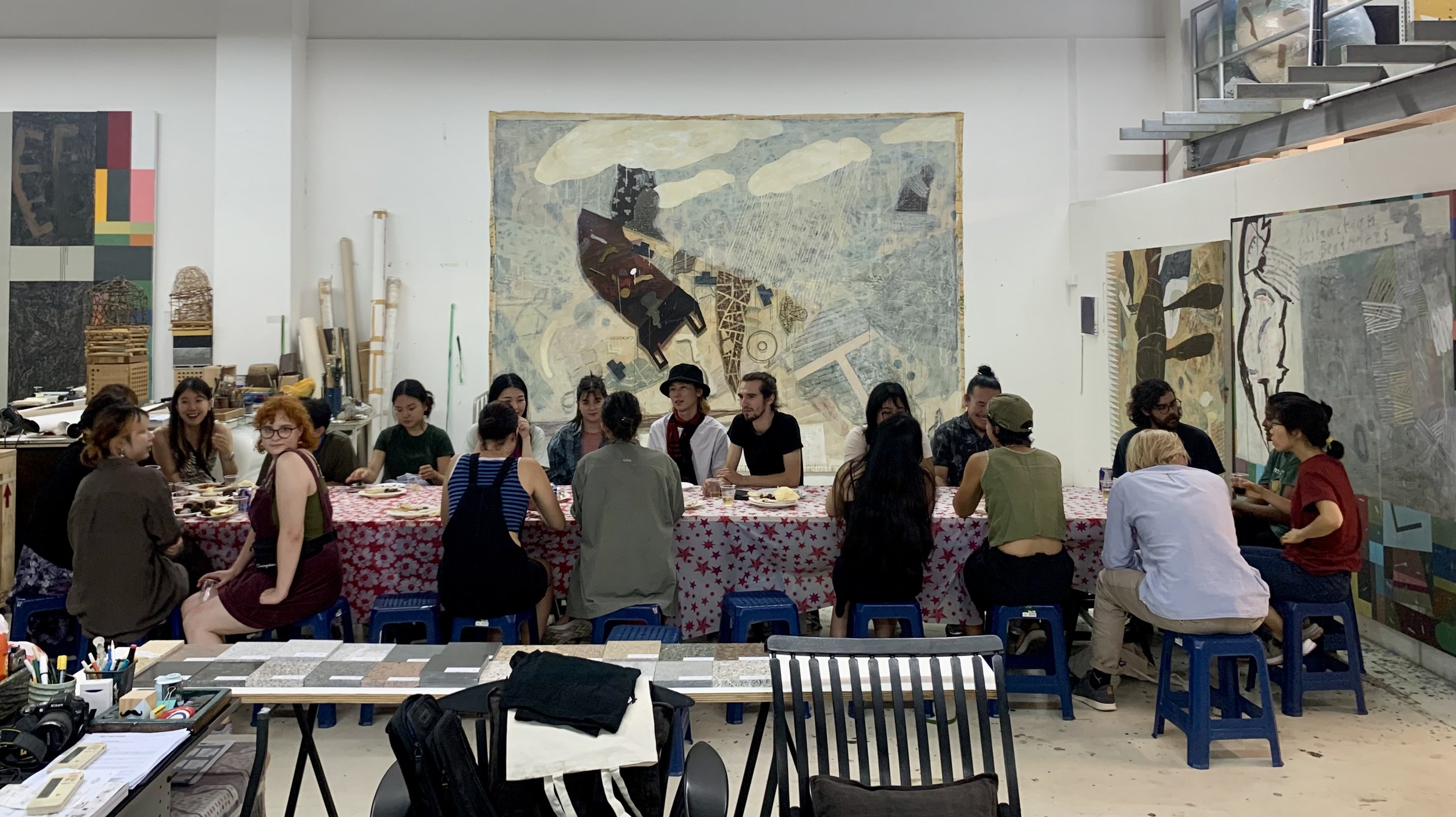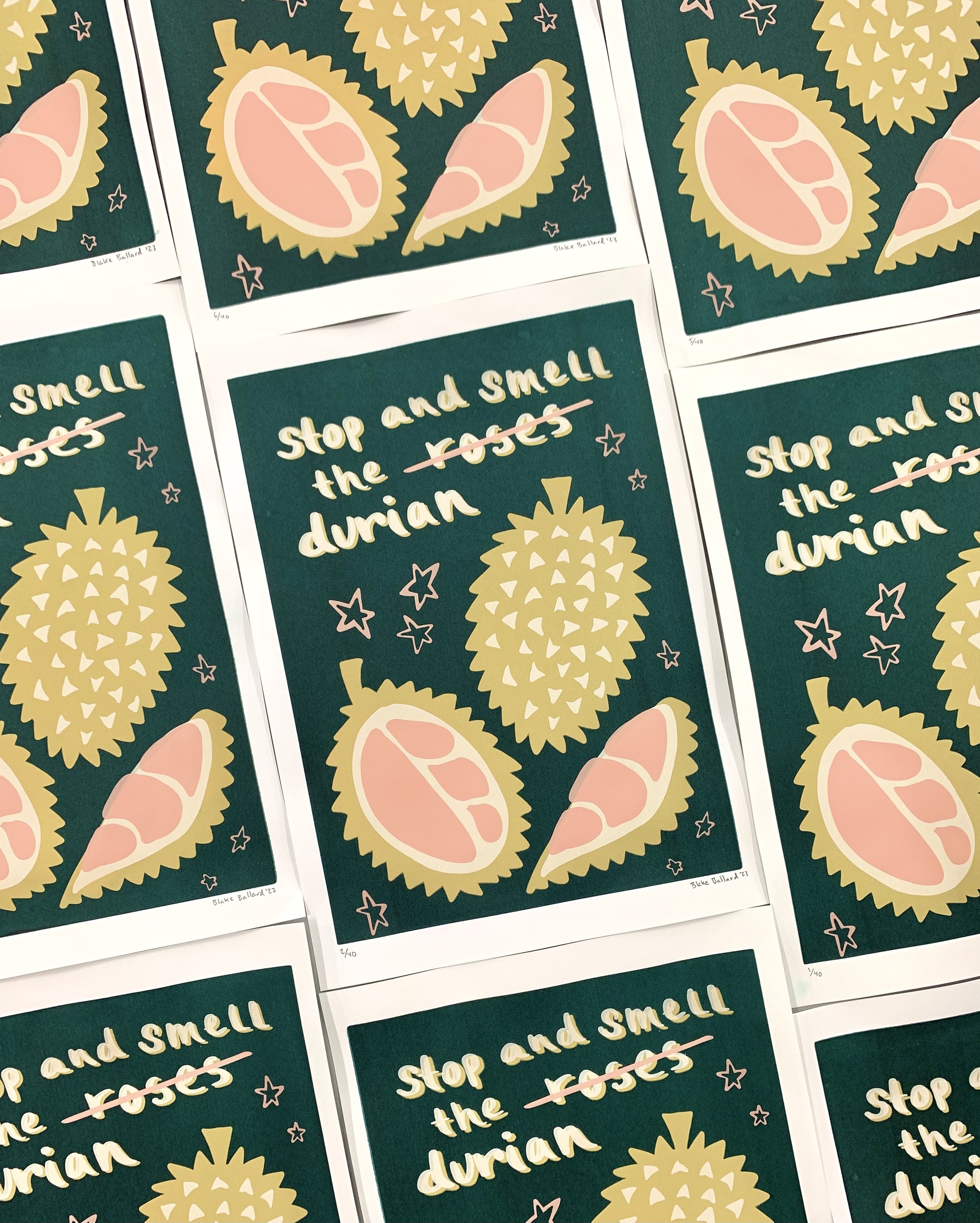I certainly have plenty of memories of spending hours at recess playing tag (affectionately called bullpucky for reasons only known to 10-year-old Blake), tetherball, swinging, climbing a jungle gym, pretend Pokémon battles, and much more. The playground was a site for exploration, community building, and expression.
Initially, I began with idea to bring that sense of play to a gallery space using textile mediums as my mode of communication. Within the context of this highly international and intercultural residency, I wanted to bring an activity that was a staple in our P.E. classes in elementary school to this unsuspecting audience: the parachute. There was nothing like the drama of playing with a rainbow parachute as a kid. Launching balls into the air, trapping a bubble of air underneath, and replicating ocean waves all from a bit of nylon fabric. However, as I continued exploring Singapore, their art institutions, and getting to know my cohort better, we started to discuss larger questions surrounding authority, cultural rules, and power.
Playgrounds today, more than ever, are fraught with contested freedoms in the determination of space, what is contained within a space and who should be in this space. This has been at the heart of the formation of the 20th century’s major political offering: the nation-state, an endless line of perforations between communities, languages, oceans and ideas.
I felt that my attention could be focused on creating work that is not only site-specific, but also has metaphorical ties to larger questions surrounding cultural capital and those power structures that guide us everyday. The research for my MFA dissertation is also leading in this direction, so it was perfect conceptual tie-in to my current practice.
This led to the creation of a ground-based installation inspired by hop scotch games and chalk doodles on the playground. I created a large chalk drawing of a vintage crochet pattern collected from my family’s pattern library. Crochet patterns, especially in rural America, were used to bind communities together through recurring symbols and motifs, oftentimes reinforcing the systems in power. Who sets the ground rules? asks us to question those everyday patterns and norms that have so much influence on how we see and interact with society, even if they are as innocuous as a crochet doily. Through the chalk pattern, the ground becomes a contested location where walkers are negotiating their role in a larger socio-cultural-political space. Each step smudges, smears, and changes the ground rules. Located on the LASALLE College of the Arts campus, students, staff, and visitors are rewriting the pattern set into Singaporean soil.






